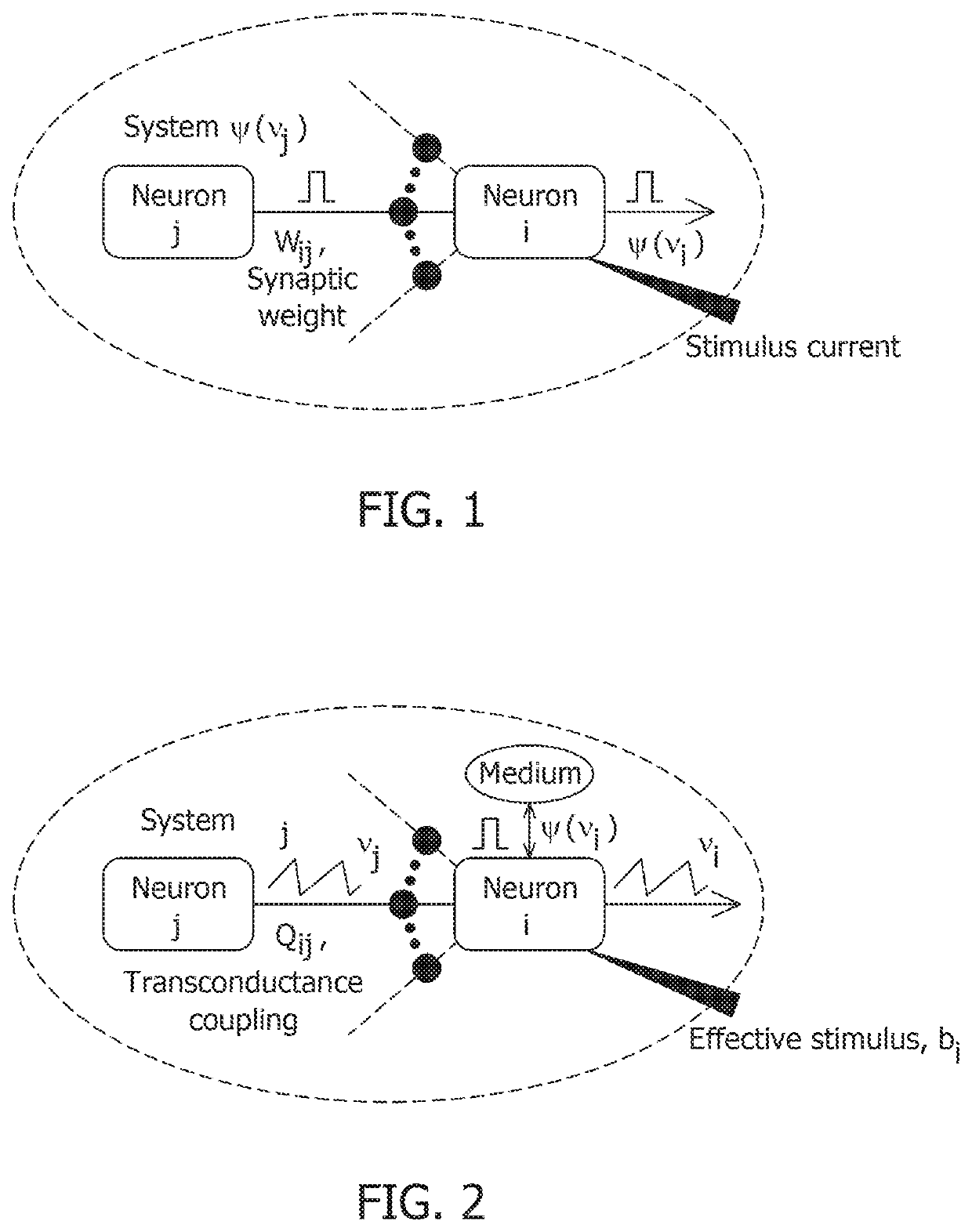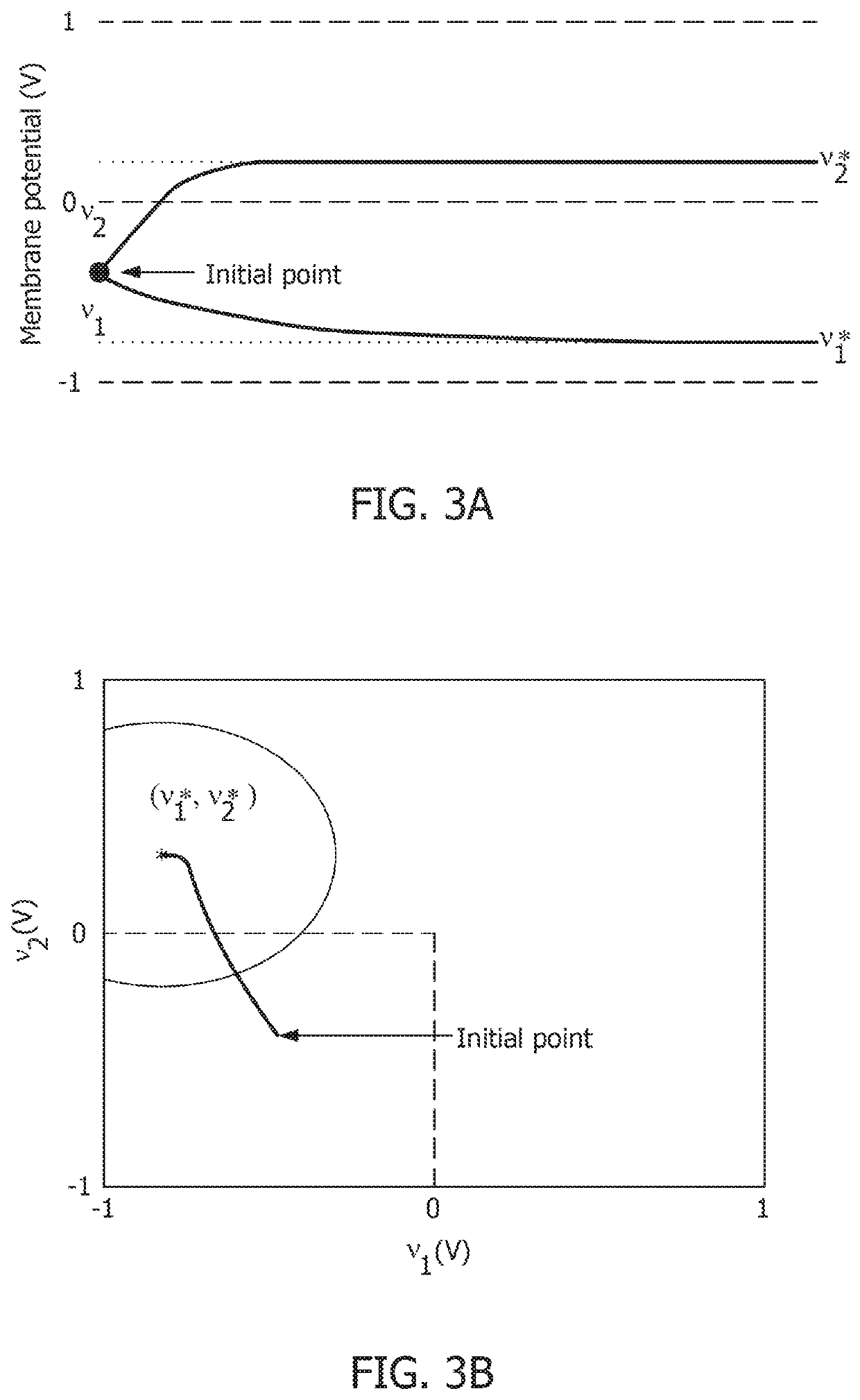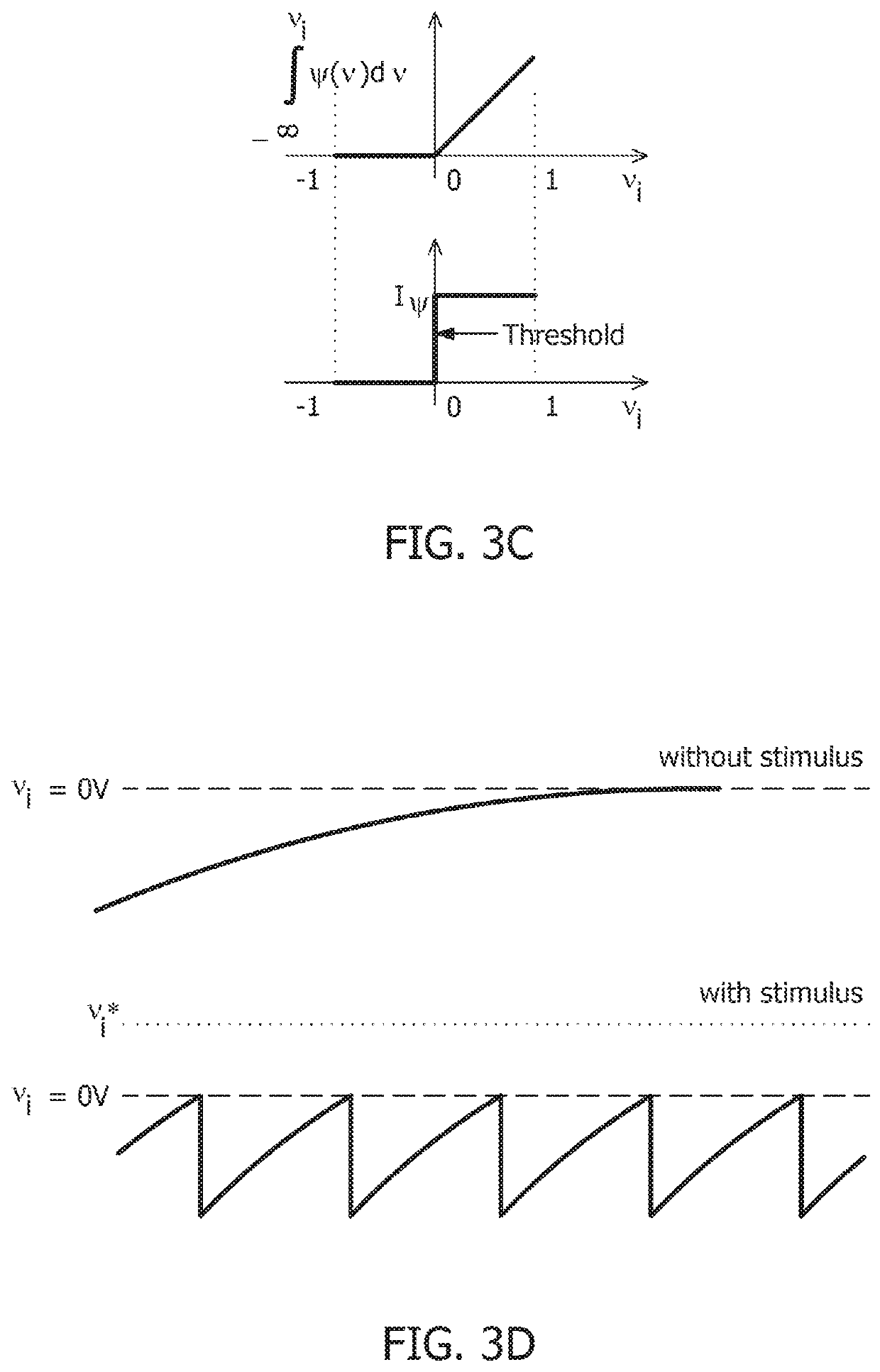Method for designing scalable and energy-efficient analog neuromorphic processors
a neuromorphic processor and scalable technology, applied in the field of neural networks, can solve the problems of consuming significantly more power, reducing the efficiency of comparable silicon implementations, and not optimizing the single action potential generated by biological neurons in energy, so as to achieve the effect of reducing the energy consumption of the network
- Summary
- Abstract
- Description
- Claims
- Application Information
AI Technical Summary
Benefits of technology
Problems solved by technology
Method used
Image
Examples
Embodiment Construction
[0072]Spiking neural networks that emulate biological neural networks are often modeled as a set of differential equations that govern temporal evolution of its state variables, i.e., neuro-dynamical parameters such as membrane potential and the conductances of ion channels that mediate changes in the membrane potential via flux of ions across the cell membrane. The neuron model is then implemented, for example, in a silicon-based circuit and connected to numerous other neurons via synapses to form a spiking neural network. This design approach is sometimes referred to as a “bottom-up” design that, consequently, does not optimize network energy.
[0073]The disclosed spiking neural network utilizes a “top-down” design approach under which the process of spike generation and neural representation of excitation is defined in terms of minimizing some measure of network energy, e.g., total extrinsic power that is a combination of power dissipation in coupling between neurons, power injecte...
PUM
 Login to View More
Login to View More Abstract
Description
Claims
Application Information
 Login to View More
Login to View More - R&D
- Intellectual Property
- Life Sciences
- Materials
- Tech Scout
- Unparalleled Data Quality
- Higher Quality Content
- 60% Fewer Hallucinations
Browse by: Latest US Patents, China's latest patents, Technical Efficacy Thesaurus, Application Domain, Technology Topic, Popular Technical Reports.
© 2025 PatSnap. All rights reserved.Legal|Privacy policy|Modern Slavery Act Transparency Statement|Sitemap|About US| Contact US: help@patsnap.com



